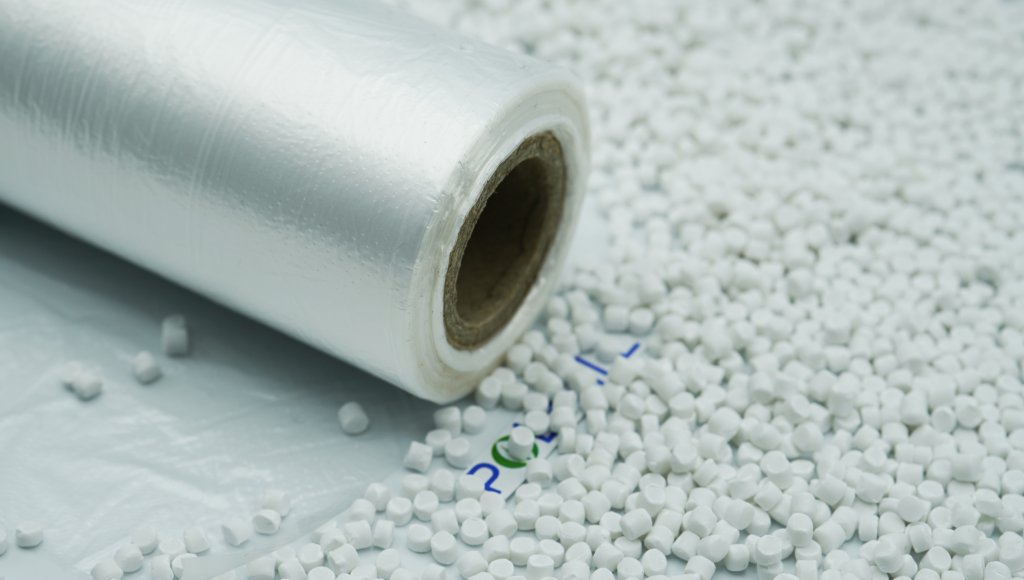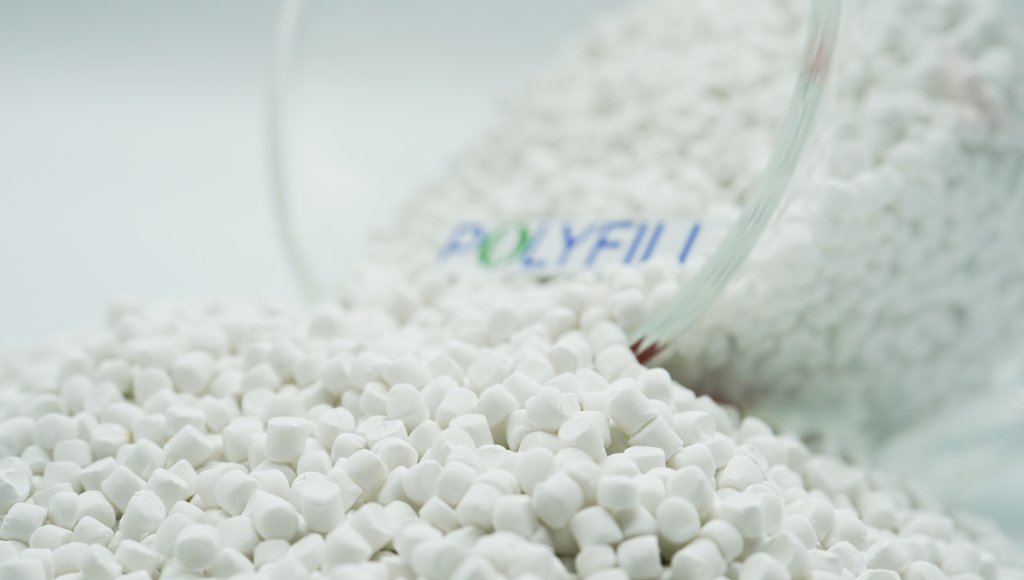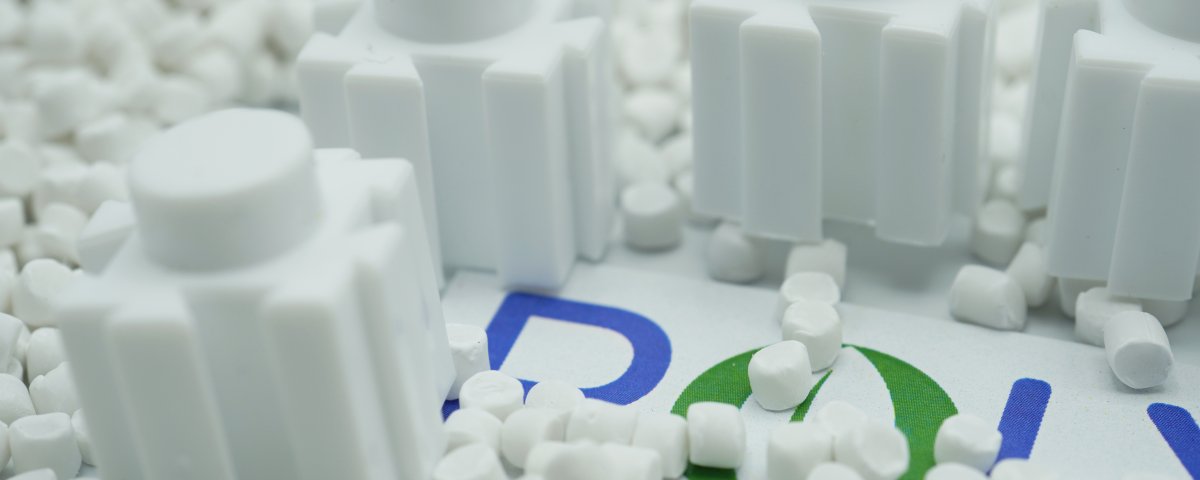Polypropylene is amongst one of the most common plastic materials with various applications in our daily life. However, as most of PP resin depends on particular sources, it significantly degrades the competitiveness of end-products. That’s why the use of calcium carbonate filler in polypropylene is initiated and soonly popularized. So what are the outstanding benefits of calcium carbonate filler in PP plastic?
Polypropylene was first polymerized in 1951 by two petroleum scientists named Paul Hogan and Robert Banks. This material was then synthesized and completed by Italian chemists Giulio Natta in 1954. Thanks to its outstanding elasticity, flexibility, anti-chemical ability, high-level of transparency and stability, polypropylene was soonly embraced by manufacturers worldwide. Just 3 years after that, polypropylene (PP) became popular and was widely applied in many uses worldwide such as consuming goods, automotive industry, industrial uses and furniture. The application of calcium carbonate filler in polypropylene took place when resin’s global price was wildly fluctuated as a result of market uncertainties and oil materials dependence, which provided plastic enterprises a more optimal material solution.
1. The use of plastic fillers and calcium carbonate filler
As end-products’ requirements are getting more and more numerous and complicated, barely can any plastic resins meet all expected properties itself, which drives the application of plastic fillers. Basically, calcium carbonate fillers are particles added to the manufacturing process of plastic products to enhance specific properties for end-products and most importantly, to reduce production cost. In other words, plastic fillers do not completely replace plastic resins, they are filled in the combination along with other substances to uphold the performance of end-products.

Some common plastic fillers include CaCO3 filler, talc filler, barium sulfate, sodium sulfate, China clay,…In which, calcium carbonate filler is by far the most well-known. Generally, it is a combination of CaCO3 powder (which is the main component with the proportion accounted for upto 70%) and a small amount of plastic resin. CaCO3 is mostly known in the form of limestone located in Northern Vietnam. Thanks to its outstanding properties, calcium carbonate filler has become the most-used plastic filler, especially in polypropylene. So, how the application of calcium carbonate filler in polypropylene helps plastic enterprises?
Related: Top 5 largest calcium carbonate filler manufacturers in Vietnam
2. The benefits of calcium carbonate filler in polypropylene
Product’s performance enhancing
The use of calcium carbonate filler helps PP products increase many properties. For example, with a fill rate of 18%, calcium carbonate filler helps polypropylene products increase heat deflection temperature, impact strength, stiffness, barrier properties, and print quality. Besides, there’s no worry about calcium carbonate filler’s impact on plastic properties as it is completely inert, thus allowing it to be used in most types of plastic resins including polypropylene. Depending on end-products’ requirements and characteristics, an appropriate amount of calcium carbonate filler in polypropylene will be added to achieve the best result.
In addition, natural white color of CaCO3 also provides end-products made of polypropylene with high brightness. This is specifically important for packaging industries and household appliances, which normally require a high level of glossiness.
Production cost reduction
Unlike plastic resins which are normally uncertain as a result of oil dependence, CaCO3 is far more stable and reasonable. Thereby, the application of calcium carbonate filler in polypropylene definitely helps plastic enterprises save production cost. With a fill rate of around 60%, it possibly saves up to 20% production cost. Most importantly, the stability of input materials provides plastic enterprises with a more sustainable development, thus enhancing end-products competitiveness.

Processing improvement
The application of calcium carbonate filler in polypropylene also drives the processing of plastic products by allowing them to be heated up and cooled down faster. Besides, the improved thermal conductivity of calcium carbonate filler significantly saves energy during processing and allows higher output rates as well as increased conversion rates. The less time needed for cooling also reduces shrinkage and warping, thus resulting in greater predictability in the finished part.
Sustainable development
As plastic waste has become an alarming problem of modern society, many alternative materials have been taken into consideration. However, it’s not an easy mission because most biomaterials have limited functionalities compared with that of fossil plastic, not to mention high price. With approximately 70% components of CaCO3 powder, calcium carbonate filler can easily strike a balance between efficiency and eco-friendliness. It featured characteristics of fossil plastic such as flexibility, durability, tensile strength,…while being less polluted than traditional plastic, thus reducing environmental pollution. As such, the use of calcium carbonate filler in polypropylene is more eco-friendly than traditional plastic resins, thus gradually paving the way for plastic enterprises’ sustainable development
3. PolyFill calcium carbonate filler
Established in 2017, PolyFill has become one of the leading Vietnamese calcium carbonate filler manufacturers. Thanks to advantages regarding advanced technology, qualified experts and high-quality material area, PolyFill has provided customers with excellent calcium carbonate filler. Our products have been widely applied in many fields such as construction industry, packaging, household appliances manufacturing, electric equipment,… with a view to optimizing production cost and to enhancing product’s competitiveness as well.

Particularly, PolyFill calcium carbonate filler in polypropylene has significantly contributed to plastic enterprises’ success as well as assisted in environmental protection. The use of this material not only enhances key properties of end-products such as brightness, flexibility, durability,… but also saves a large amount of production cost for plastic enterprise.
Currently, PolyFill has provided customers with various types of calcium carbonate fillers to exactly fit with their requirements. Our available products including:
- PP filler: the combination of PP resin, high-quality CaCO3 and additives.
- PE filler: is produced with PE resin, high-quality CaCO3 and additives.
- Transparent filler masterbatch: the mixture of inorganic transparent powder as BaSO4 or Na2SO4 in PP/PE resin and other additives.
- HD filler: includes polyolefin carrier, CaCO3 and other additives.
- HIPS filler: contains high portion of pure CaCO3 mixed with additives and plastic resin
For further information and samples, please contact us HERE!

